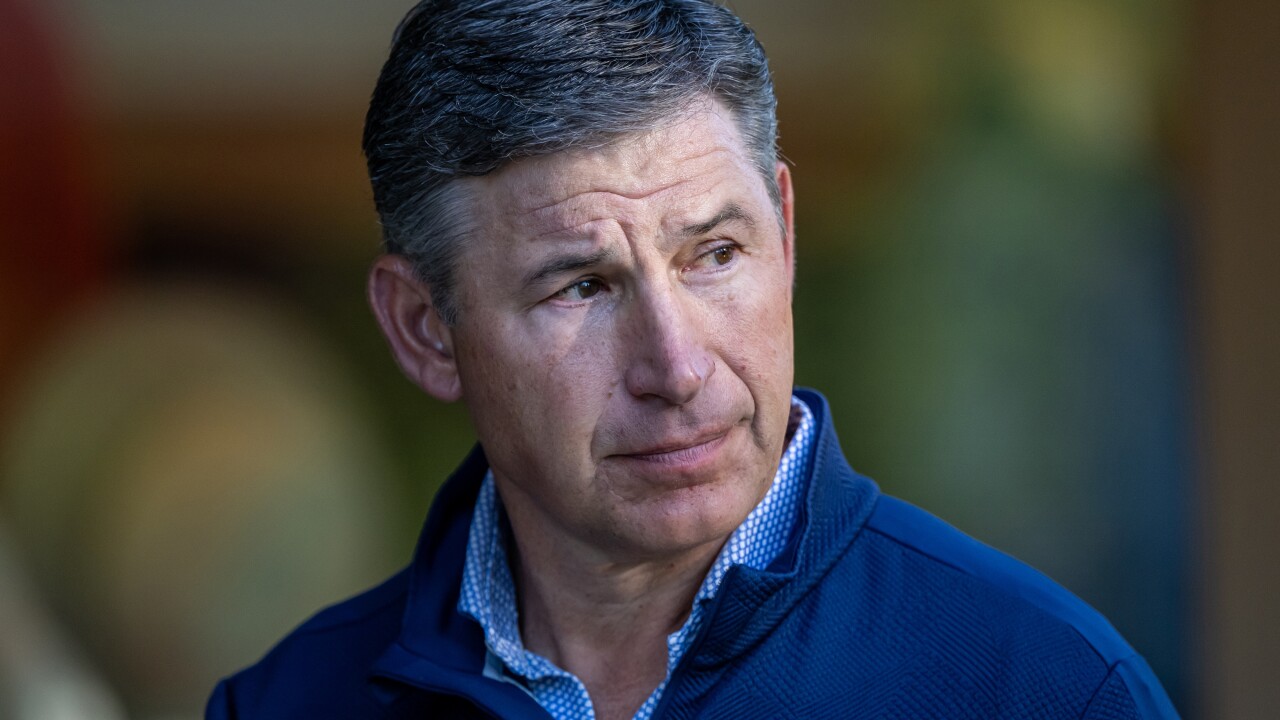By switching to an online bill-payment model that essentially eliminates float revenue, Bank of America Corp. added another customer-friendly feature to its Internet banking service.
Unlike B of A’s high-profile announcement of free online banking, the model switch came with little fanfare. Perhaps that was not surprising — CheckFree Corp., which handles B of A’s bill-payment service, says the Charlotte company was the last major customer to make the switch.
And CheckFree, not B of A, lost float revenue as a result of the switch.
Banks have two methods for debiting money for online bill payments. The “good funds” method, in which the bank deducts the money immediately after a payment is scheduled, offers a float opportunity, because the biller receives the money a day later.
In the “risk” or “due date” method, the money is taken from the consumer and sent to the biller simultaneously.
CheckFree, of Atlanta, said in an October earnings call that a large customer (which it did not name) was about to switch its bill-payment method. In an interview Wednesday, Matt Lewis, an executive vice president and the general manager of electronic commerce for CheckFree, said it had urged its bank customers to switch to the risk model — so called because CheckFree assumes the risk that a payment will bounce — because the transactions are faster.
“We have never based our business model on the component that float represents,” Mr. Lewis said. “It’s probably mathematically correct, but it’s not philosophically correct, to refer to … [losing the float] as a financial loss.”
He would not say how much float revenue CheckFree would lose, but he said it was easy to quantify one of the benefits of the switch: Payments will take one day less to clear.
Because of B of A’s switch, “we expect to generate more transactions, more consumers, more mainstream users,” and all of these elements will give it more revenue than it would have generated otherwise, Mr. Lewis said. He would not say how much more revenue the switch would create.
Betty Riess, a B of A spokeswoman, said the change is “something that we’ve been looking at doing for some time.”
Customer feedback was a factor in the decision to switch, she said.
That rationale was echoed by Wachovia Corp. of Charlotte, which is switching vendors from Marshall & Ilsley Corp.’s Metavante Corp. to CheckFree.
First Union Corp. switched from CheckFree to Metavante when it bought the old Wachovia in 2001. The switch back to CheckFree, announced in July 2004, is still in progress. Wachovia now has customers on each vendor’s system and uses the risk model with CheckFree and the good funds model with Metavante.
Wachovia said that 366,548 of its customers were actively using the CheckFree service at the end of last month, and 357,519 were actively using Metavante’s. (The banking company defines an “active” user as one who has made an online payment in the last 90 days.)
Thomas Noyes, the director of online and payment services at Wachovia, said customers whose payments are not sent to the biller the day they are made phone the call center more frequently. “I would easily say that we have three times as many calls in a good funds model than in a risk-based model.”
He would not say how often online bill payments bounce, but he did say, “With the risk model, it’s just like a checkbook. We’re not checking on balances when the payment is sent.”
Tom Kelly, a spokesman for JPMorgan Chase & Co. said that bounce risk is the reason Bank One Corp., which his company bought in July 2004, stopped using the risk approach three years ago. (Bank One stopped using CheckFree and started processing its own online bill payments in 2004.)
JPMorgan Chase prefers the good funds model for customer service reasons, he said. Because the company checks customers’ balances before it pays any biller, “they never have checks bounce.”
It is not clear how high the float issue rises on consumers’ list of complaints about online bill payment.
Gail Hillebrand, a senior attorney with Consumers Union, a Yonkers, N.Y., consumer advocacy group, said consumers tend to complain more about the good funds model than the risk one. “People think if there’s money out of your account, the bill’s been paid.”
Still, the group has not had reason to confront banks about the issue, because it does not get enough complaints to decide whether consumers broadly share that opinion, she said.
Complaints about float are hardly new, of course. B of A had to contend with a high-profile one last month, when former Secretary of Labor Robert Reich criticized the company during a radio broadcast for putting a two-week hold on a deposit for an account he opened when he moved from Massachusetts to California.
Mr. Reich’s comments aired Jan. 18. B of A made the online-payment switch for California customers Jan. 22 and for everyone else Feb. 12. B of A said Mr. Reich’s complaints did not affect the timing of the switch.
Mr. Lewis of CheckFree said switching from one method to another involves changing back-end systems, the user interface, and customer service methods. B of A has been working on these changes since October, he said.




